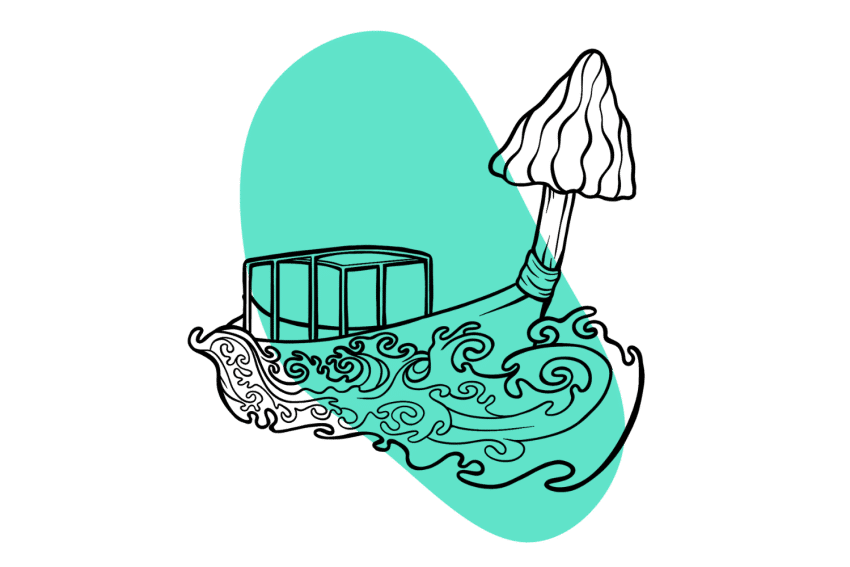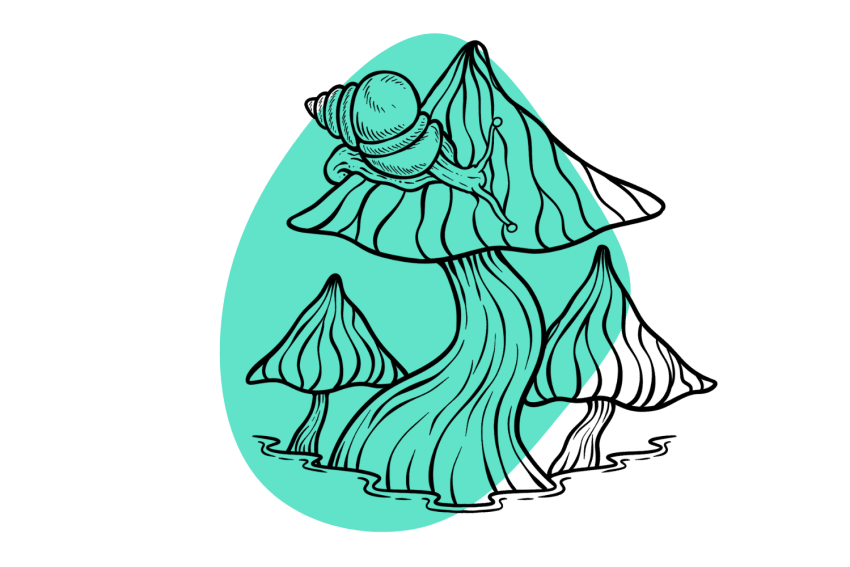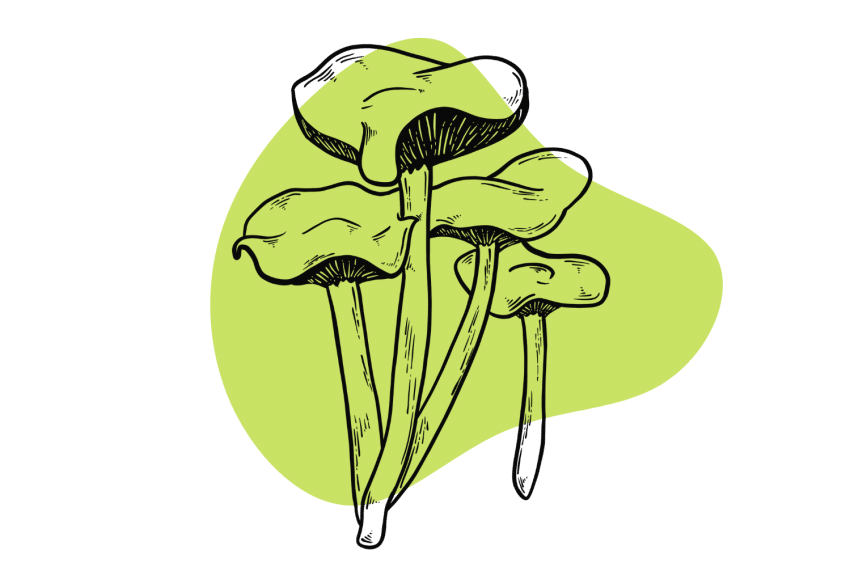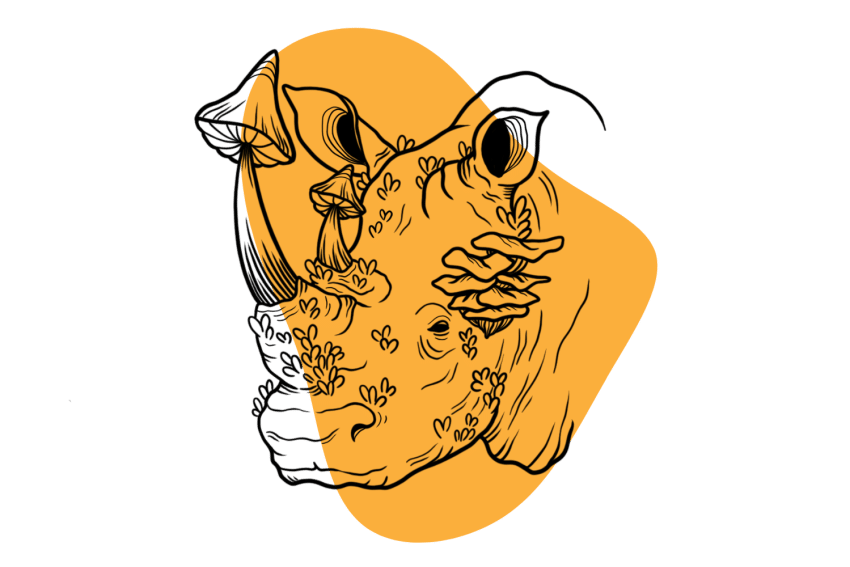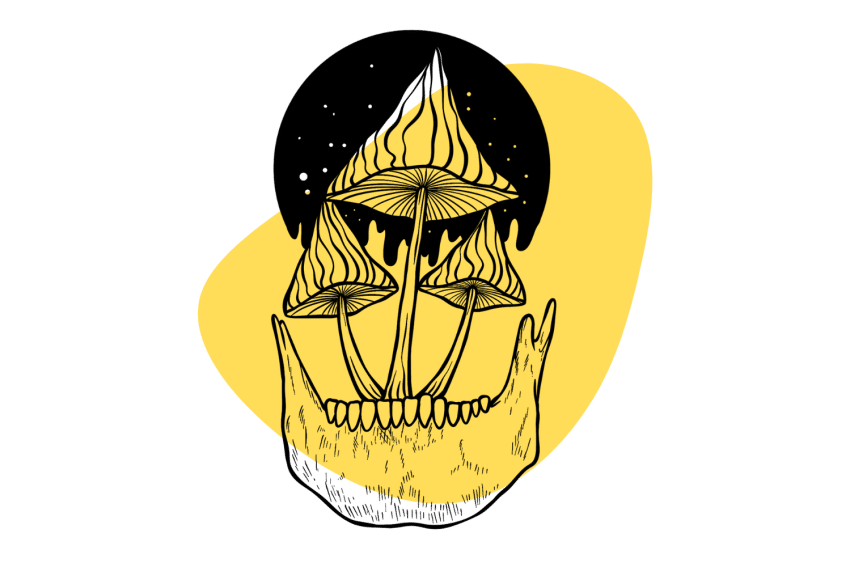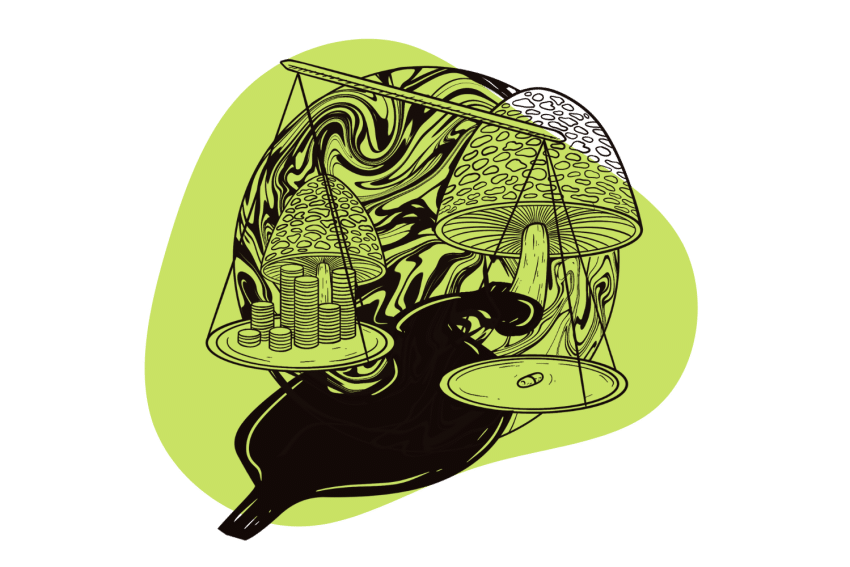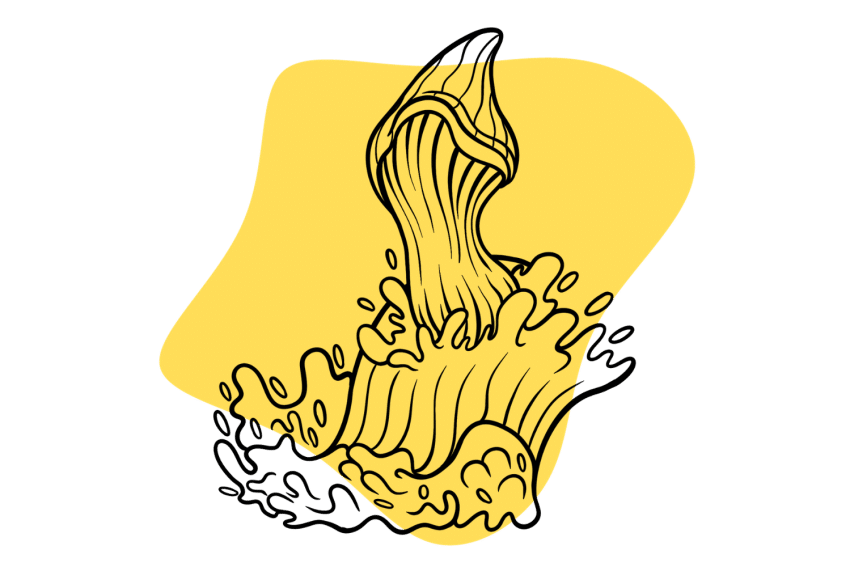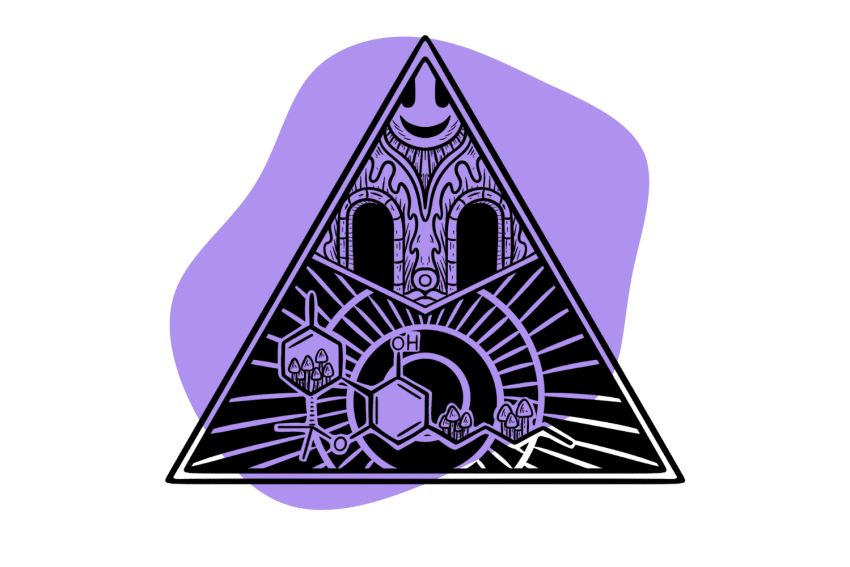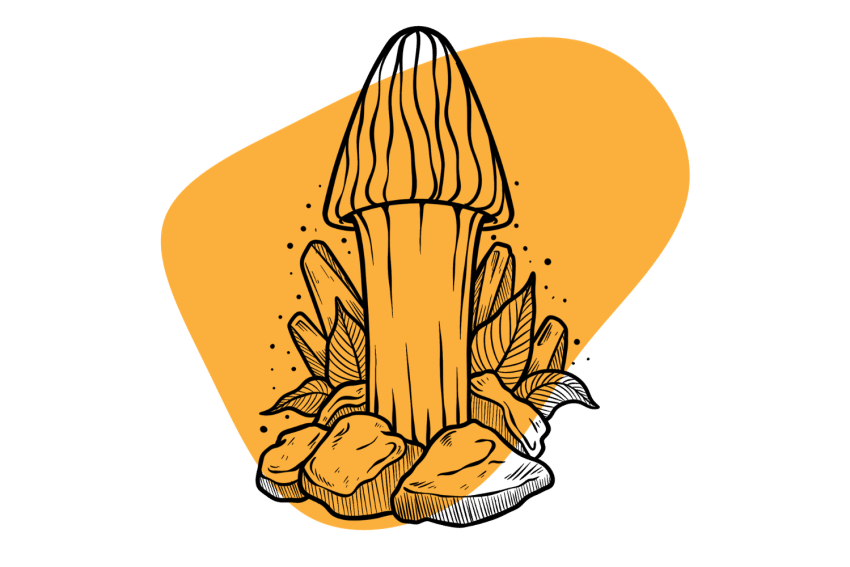Shrooms For Existential Anxiety & End of Life Care
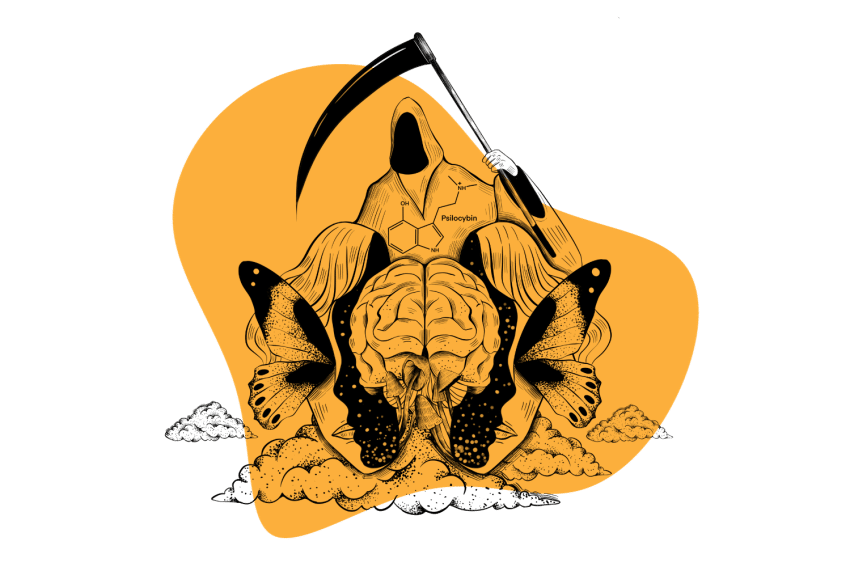
End-of-life care facilities are now using magic mushrooms to help people dealing with the existential anxiety that can accompany a terminal diagnosis.
Here’s everything you need to know about using psilocybin for this kind of care, such as what the research shows, how it’s used, and other alternatives.
What Are Magic Mushrooms & Psilocybin?
Magic mushrooms are a class of fungi that contain psilocybin and psilocin, psychedelic compounds that interact with the central and peripheral nervous systems.
Research suggests that psilocybin and psilocin mimic serotonin [1], a neurotransmitter naturally found in our brains that’s linked closely with mood, outlook on life, and our ability to perceive the world around us.
Consuming psilocybin or psilocin typically causes you to experience the world differently through a stark change in sensory perception.
Most users report a powerfully emotional or mystical (spiritual) experience — allowing them to see things from a different perspective even long after the immediate effects have worn off.
Because of this, psychedelics can alter our outlook on life and change our understanding of life and death, making them extremely helpful as a medicine for the mind.
How is Psilocybin Used In Palliative Care?
Palliative care focuses on making patients with complex and terminal diagnoses feel more comfortable, often focusing on relieving symptoms and helping them cope with the unsettling concept of death.
Some doctors use magic mushrooms and the active ingredient, psilocybin, as a part of their palliative care efforts in Canada, where psilocybin is legal for end-of-life patients. Others use it as a means of managing depression, anxiety, severe pain, and other mental health disorders [2].
In the few places it’s legal for medical purposes — including Canada, Oregon, and Washington D.C. — certified doctors must administer psilocybin, usually in a tablet, though it can be injected intravenously.
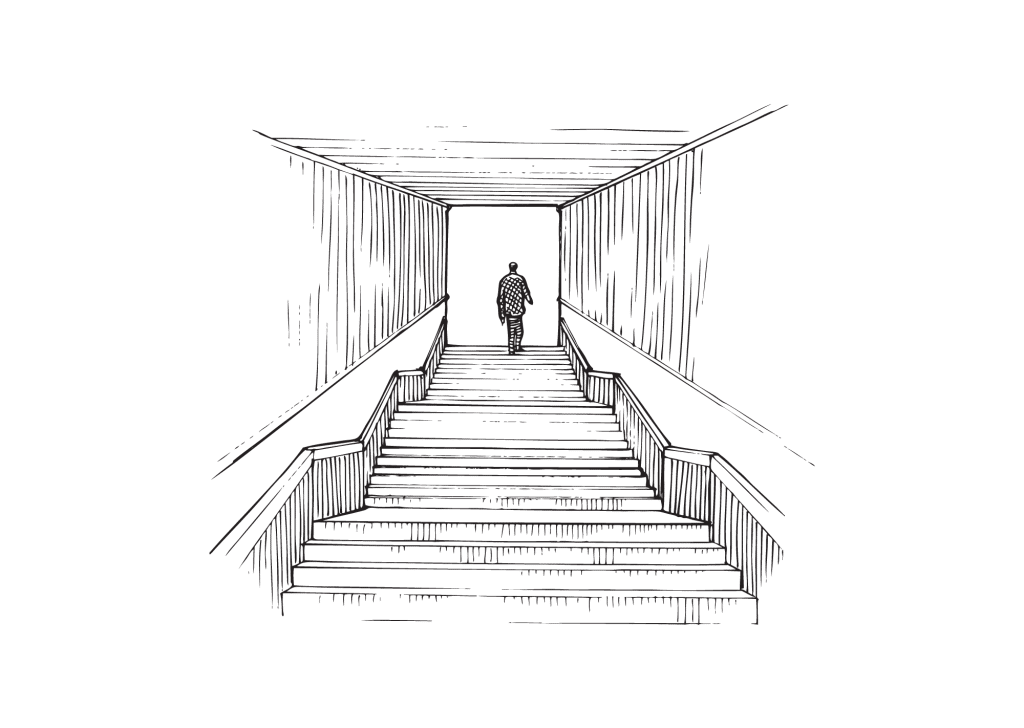
The main reason for using psilocybin with terminally ill or end-of-life patients is to alleviate existential anxiety.
Related: What is psychedelic-assisted psychotherapy?
What is Existential Anxiety?
Existential anxiety is any anxious or overwhelming feeling regarding your sense of self, self-worth, or place in the real world.
This type of anxiety arises when we question our life’s purpose or the purpose of life as a whole.
Many people coping with existential anxiety struggle to find meaning in life and to understand the purpose and pain of existence. Most people diagnosed with it struggle with a plan for their future and in finding importance in what they do.
Existential anxiety is common in the elderly and people with a terminal diagnosis.
Related: The Dark Side of Existence: Understanding the Link Between Existential Anxiety & Doomerism
Research: Magic Mushrooms For Existential Anxiety
Psilocybin and psilocin have been used to help treat existential anxiety and aid people in coping with their existence, meaning, and connection to the world around them.
Research completed by Johns Hopkins Medicine supports that psilocybin produces clinically significant results in treating terminally-ill cancer patients dealing with depression and existential anxiety.
The drugs helped patients cope with their condition and situation and allowed them to find meaning and comfort in the present. Most importantly for end-of-life patients, mushrooms can reduce confusion and fear about the future.
Here are three top-level studies on how psilocybin can manage existential anxiety.
Study #1: Perceived Depression
In 2016, the Beckley Foundation completed and published a small study showing that psilocybin produced clinically significant improvements in patients’ perceived depression levels after dosing [3]. Perhaps most crucially, the benefits lasted about six months.
Study #2: Outlook On Life
Another study completed in 2011 confirmed that psilocybin dramatically improved the outlook and mood of patients treated for depression and existential anxiety related to terminal illness [4]. Patients exhibited a much healthier mental state and could accept and embrace their meaning in the world and their future.
Study #3: Psilocybin Microdoses
One clinical study involved nearly 300 people who took microdoses of psilocybin — typically around 0.2 g — and found it can drastically improve the outlook, mood, and attitude of patients diagnosed with depression [5].
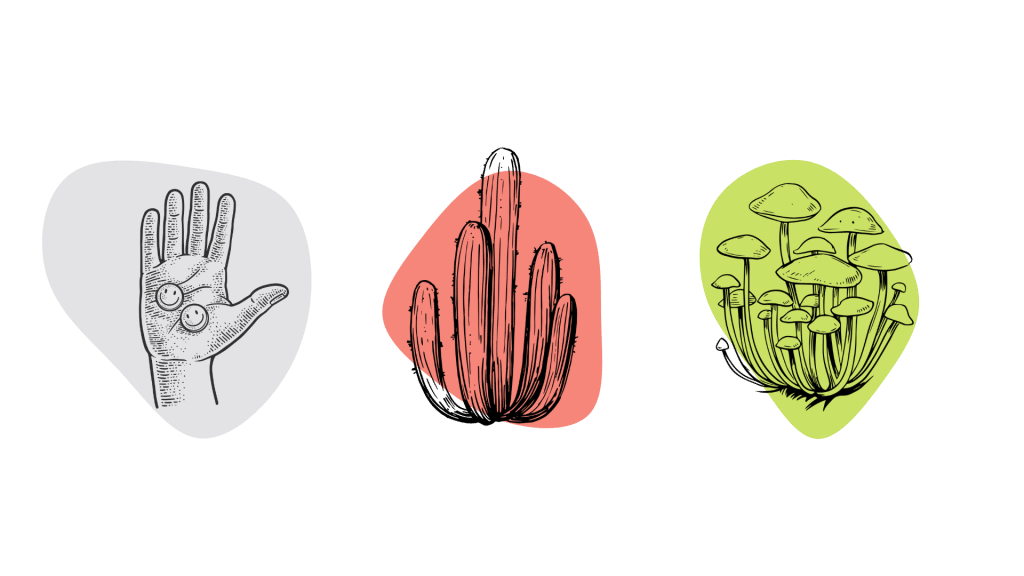
Alternatives to Psilocybin For End of Life Care
Research shows that psilocybin and psilocin are useful options for patients dealing with depression and anxiety related to terminal illnesses.
However, it’s not the only substance that can help treat end-of-life patients. Several other psychedelics show promise for this type of treatment.
LSD
Lysergic acid diethylamide (LSD) — commonly referred to as “acid” — is another psychedelic drug that was made illegal in the 1960s.
Researchers have found that it can treat existential anxiety, as it can provide patients with an alternative, honest, and open view of the world around them and an improved outlook on life and self-worth [6].
5-MeO-DMT
5-MeO-DMT is a hallucinogenic compound derived from the venom of a specific species of toad (Bufo alvarius).
A Johns Hopkins Medicine study confirmed that 5-MeO-DMT alleviated symptoms of depression and anxiety when used in the right context and with the right integration [7]. This could make it a viable alternative for helping end-of-life patients cope with their future.
4-AcO-DMT
4-AcO-DMT — also called O-acetylpsilocin and, more commonly, “synthetic shrooms” — is a psilocin analog that causes effects similar to magic mushrooms [8].
In fact, 4-AcO-DMT is converted into psilocin — the same active ingredient in magic mushrooms.
This compound may offer end-of-life patients the ability to cope more readily with their condition and fate, and it can offer users a more open and honest outlook on their meaning, self-worth, and place in the world.
Mescaline
Mescaline is derived from peyote and San Pedro cacti and acts similarly to psilocybin and LSD. It can offer relief from anxiety, depression, and mental anguish and could be a useful treatment for those coping with the ontological shock brought on when faced with one’s own mortality [9].
Ketamine
Ketamine is not a true psychedelic and is more readily classified as a dissociative drug. These kinds of drugs may help with ontological anxieties by temporarily inhibiting the sensation of “self” through a dissociative state.
Ketamine might also help with low brain synaptic capacity, which is commonly associated with depression and anxiety [10].
Unlike most other psilocybin alternatives, the benefits tend to wear off quickly. As such, it’s typically only used for treatment-resistant depression in the United States [11].
The Importance of Set & Setting
Some people believe that hallucinogenic or psychedelic drugs are effective in treating depression or existential anxiety. In reality, most palliative care experts use a more holistic approach. They combine these substances, a generally positive mindset about the drugs, an appropriate setting for consuming them, and an in-depth discussion with a specialist to internalize and integrate the experience.
Psychedelics and hallucinogens often get a bad reputation because of the possibility of a “bad trip,” which is when the drug provides a traumatic experience that induces anxiety, panic, and even psychosis.
An important part of taking psychedelics for end-of-life care and avoiding a bad trip includes set and setting.
“Set” refers to “mindset.”
The patient should have a positive mindset about the drug, how it will affect them, and the lasting impact of using it. Reports suggest that having a positive opinion of how the drug and being in a good mental state has a direct impact on the experience [12].
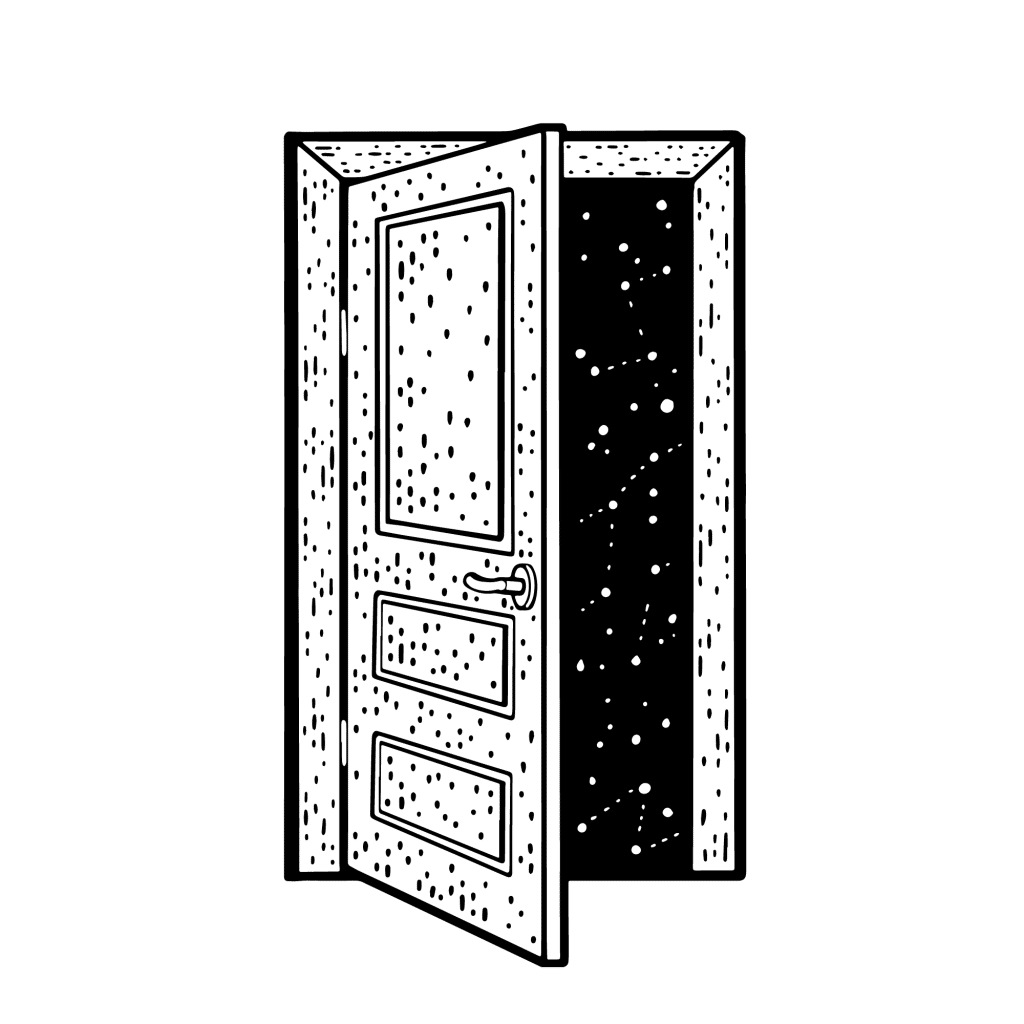
“Setting” refers to where the psychedelic experience takes place.
Where you consume psilocybin or other psychedelics can make a significant difference in your experience. Some research suggests that a proper setting can help avoid bad trips, bad experiences, and being in harm’s way [12].
For end-of-life patients, set and setting can mean the difference between existential anxiety being cured and getting worse following treatment.
Key Takeaways: Psilocybin and Psilocin for End-of-Life Care
Magic mushrooms are psychedelic fungi containing psilocybin and psilocin — two hallucinogenic compounds that can increase creativity, mimic serotonin in the brain, improve mood, alleviate anxiety, and offer other mental health benefits.
Psilocybin mushrooms were listed as a Schedule I drug by the Drug Enforcement Agency (DEA) in the 1970s, but medical experts are re-evaluating them. Research shows they could be useful in certain medical situations.
Psilocybin was legalized in Oregon and Washington, D.C., for medical purposes and is used to treat depression and existential anxiety in terminally ill, end-of-life patients.
Terminally-ill patients can better accept their fate, cope with their emotions, and approach their future with better clarity and openness when they use psilocybin in the right setting and with the proper mindset and medical attention.
References
- Davis, A. K., Barrett, F. S., May, D. G., Cosimano, M. P., Sepeda, N. D., Johnson, M. W., … & Griffiths, R. R. (2021). Effects of psilocybin-assisted therapy on major depressive disorder: a randomized clinical trial. JAMA Psychiatry, 78(5), 481-489.
- Hutten, N. R., Mason, N. L., Dolder, P. C., & Kuypers, K. P. (2019). Motives and side-effects of microdosing with psychedelics among users. International Journal of Neuropsychopharmacology, 22(7), 426-434.
- Carhart-Harris, R. L., Bolstridge, M., Rucker, J., Day, C. M., Erritzoe, D., Kaelen, M., … & Nutt, D. J. (2016). Psilocybin with psychological support for treatment-resistant depression: an open-label feasibility study. The Lancet Psychiatry, 3(7), 619-627.
- Grob, C. S., Danforth, A. L., Chopra, G. S., Hagerty, M., McKay, C. R., Halberstadt, A. L., & Greer, G. R. (2011). Pilot study of psilocybin treatment for anxiety in patients with advanced-stage cancer. Archives of general psychiatry, 68(1), 71-78.
- Anderson, T., Petranker, R., Christopher, A., Rosenbaum, D., Weissman, C., Dinh-Williams, L. A., … & Hapke, E. (2019). Psychedelic microdosing benefits and challenges: an empirical codebook. Harm reduction journal, 16(1), 1-10.
- Griffiths, R. R., Johnson, M. W., Carducci, M. A., Umbricht, A., Richards, W. A., Richards, B. D., … & Klinedinst, M. A. (2016). Psilocybin produces substantial and sustained decreases in depression and anxiety in patients with life-threatening cancer: A randomized, double-blind trial. Journal of psychopharmacology, 30(12), 1181-1197.
- Davis, A. K., So, S., Lancelotta, R., Barsuglia, J. P., & Griffiths, R. R. (2019). 5-methoxy-N, N-dimethyltryptamine (5-MeO-DMT) used in a naturalistic group setting is associated with unintended improvements in depression and anxiety. The American journal of drug and alcohol abuse, 45(2), 161-169.
- Malaca, S., Lo Faro, A. F., Tamborra, A., Pichini, S., Busardò, F. P., & Huestis, M. A. (2020). Toxicology and Analysis of Psychoactive Tryptamines. International Journal of Molecular Sciences, 21(23), 9279.
- Dyck, E. (2019). Psychedelics and dying care: A historical look at the relationship between psychedelics and palliative care. Journal of psychoactive drugs, 51(2), 102-107.
- R Vose, L., & K Stanton, P. (2017). Synaptic plasticity, metaplasticity and depression. Current Neuropharmacology, 15(1), 71-86.
- Serafini, G., H Howland, R., Rovedi, F., Girardi, P., & Amore, M. (2014). The role of ketamine in treatment-resistant depression: a systematic review. Current Neuropharmacology, 12(5), 444-461.
- Haijen, E. C., Kaelen, M., Roseman, L., Timmermann, C., Kettner, H., Russ, S., … & Carhart-Harris, R. L. (2018). Predicting responses to psychedelics: a prospective study. Frontiers in pharmacology, 9, 897.

